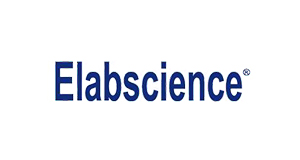Recombinant Human FGFR3 protein (His tag)
Recombinant Human FGFR3 protein (His tag)
SKU
ELSPDEH100275-20
Packaging Unit
20 µg
Manufacturer
Elabscience Biotechnology
Availability:
loading...
Price is loading...
Abbreviation: FGFR3
Target Synonym: Fibroblast growth factor receptor 3;FGFR-3;FGFR3;JTK4;IIIc;ACH;CD333;CEK2;HSFGFR3EX
Target Species: Human
Expression Host: E.coli
Fusion Tag: N-His
UNIProt ID: P22607
Background: FGFR3, also known as CD333, is a member of the fibroblast growth factor receptor (FGFR) family, with its amino acid sequence being highly conserved between members and among divergent species. FGFR family members differ from one another in their ligand affinities and tissue distribution. FGFRs are transmembrane catalytic receptors that have intracellular tyrosine kinase activity. Mutations in FGFR genes are the cause of several human developmental disorders characterized by skeletal abnormalities such as achondroplasia, and upregulation of FGFR expression may lead to cell transformation and cancer. FGFR3, a full-length representative protein would consist of an extracellular region, composed of three immunoglobulin-like domains, a single hydrophobic membrane-spanning segment and a cytoplasmic tyrosine kinase domain. The extracellular portion of FGFR3 interacts with fibroblast growth factors, setting in motion a cascade of downstream signals, ultimately influencing mitogenesis and differentiation. FGFR3 binds acidic and basic fibroblast growth hormone and plays a role in bone development and maintenance. Mutations in FGFR3 gene lead to craniosynostosis and multiple types of skeletal dysplasia. Three alternatively spliced transcript variants that encode different protein isoforms have been described. CD333 is the receptor for acidic and basic fibroblast growth factors.
Sequence: Glu 23-Gly 375
Purity: > 95 % as determined by reducing SDS-PAGE.
Formulation: Lyophilized from sterile PBS, pH 7.4.
Normally 5 % - 8 % trehalose, mannitol and 0.01% Tween80 are added as protectants before lyophilization.
Please refer to the specific buffer information in the printed manual.
Endotoxin: Please contact us for more information.
Target Synonym: Fibroblast growth factor receptor 3;FGFR-3;FGFR3;JTK4;IIIc;ACH;CD333;CEK2;HSFGFR3EX
Target Species: Human
Expression Host: E.coli
Fusion Tag: N-His
UNIProt ID: P22607
Background: FGFR3, also known as CD333, is a member of the fibroblast growth factor receptor (FGFR) family, with its amino acid sequence being highly conserved between members and among divergent species. FGFR family members differ from one another in their ligand affinities and tissue distribution. FGFRs are transmembrane catalytic receptors that have intracellular tyrosine kinase activity. Mutations in FGFR genes are the cause of several human developmental disorders characterized by skeletal abnormalities such as achondroplasia, and upregulation of FGFR expression may lead to cell transformation and cancer. FGFR3, a full-length representative protein would consist of an extracellular region, composed of three immunoglobulin-like domains, a single hydrophobic membrane-spanning segment and a cytoplasmic tyrosine kinase domain. The extracellular portion of FGFR3 interacts with fibroblast growth factors, setting in motion a cascade of downstream signals, ultimately influencing mitogenesis and differentiation. FGFR3 binds acidic and basic fibroblast growth hormone and plays a role in bone development and maintenance. Mutations in FGFR3 gene lead to craniosynostosis and multiple types of skeletal dysplasia. Three alternatively spliced transcript variants that encode different protein isoforms have been described. CD333 is the receptor for acidic and basic fibroblast growth factors.
Sequence: Glu 23-Gly 375
Purity: > 95 % as determined by reducing SDS-PAGE.
Formulation: Lyophilized from sterile PBS, pH 7.4.
Normally 5 % - 8 % trehalose, mannitol and 0.01% Tween80 are added as protectants before lyophilization.
Please refer to the specific buffer information in the printed manual.
Endotoxin: Please contact us for more information.

 Deutsch
Deutsch










